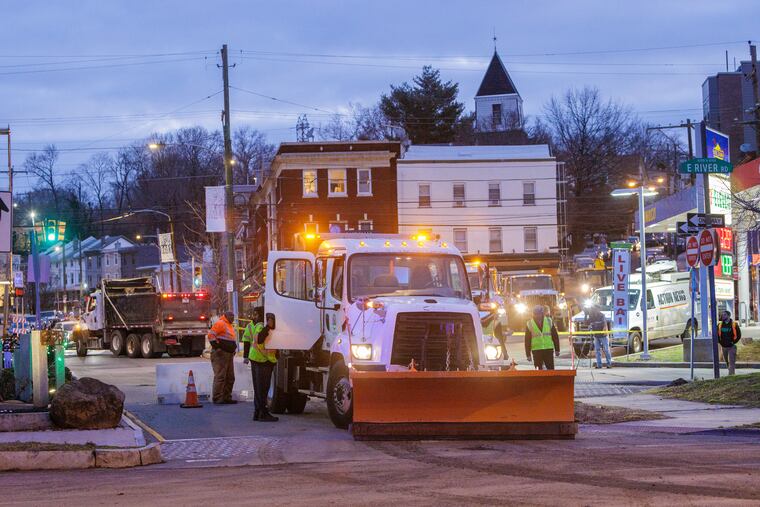How Philly’s Streets Department prepared to clear the roads after two years with little snow
Philadelphia’s snow drought ended after 716 days and the Streets Department says plow and salting operations went smoothly. Call it muscle memory and good planning.

Philadelphia’s snow drought ended Monday night after 716 days, and the Streets Department says plow and salting operations went smoothly. Call it muscle memory and good planning.
“Even though we didn’t use [the plows and salt spreaders] last year, we had them ready to go,” said Steve Lorenz, the department’s chief highway engineer.
It’s not the sexiest answer, but Lorenz said preparing for snow events is actually very routine, taking place every fall and spring whether it snows or not.
Salt is corrosive to plows and salt spreaders — the city’s main tools in wintry weather— so the equipment gets a thorough cleaning and testing before and after winter, as well as after any storms.
During that test, if the department finds any broken parts, such as ball bearings that make the plow turn, it orders replacements ahead of time.
In all, the city has about 300 plows in its arsenal, and they can be attached to garbage trucks, dump trucks, or even pickups, said Lorenzo. There are about 150 salt spreaders.
For this storm, Lorenzo said, the city started with about 50,000 tons of salt. It’s too early to say how much salt has been used or how many employees contributed to the response, though he suspects the latter to be in the hundreds, including administration and people on the ground.
Much of the success of a snow response in Philadelphia falls on people who know where to be and when, added Lorenzo, and some luck that the department is getting an accurate forecast.
The department likes to have plow trucks and salt spreaders ready to go two hours before snow is forecasted to fall. On Monday, the snow came a bit earlier than expected, but plows were on the road by 6 p.m., according to Lorenzo.
That treatment, and the fact most of the precipitation turned to slush, helped prevent any road meltdowns.
Lorenzo said Streets Department messaging also played a role, reminding drivers to keep a safe distance, remain generally cautious while on the road, and keep an eye out for black ice.
“We’ve had two years worth of brand-new drivers,” Lorenzo pointed out. “There’s people that have never driven their personal cars in the snow.”
And, of course, he said, part of the planning for snow includes keeping Mayor Cherelle Parker and the rest of her administration abreast of road treatment efforts.
And as more snow could make its way to the region Thursday night into Friday, the department is preparing to do it all over again later this week.
“As we go home tonight and get washed up and rested up, we need to start working now toward Friday,” he said.